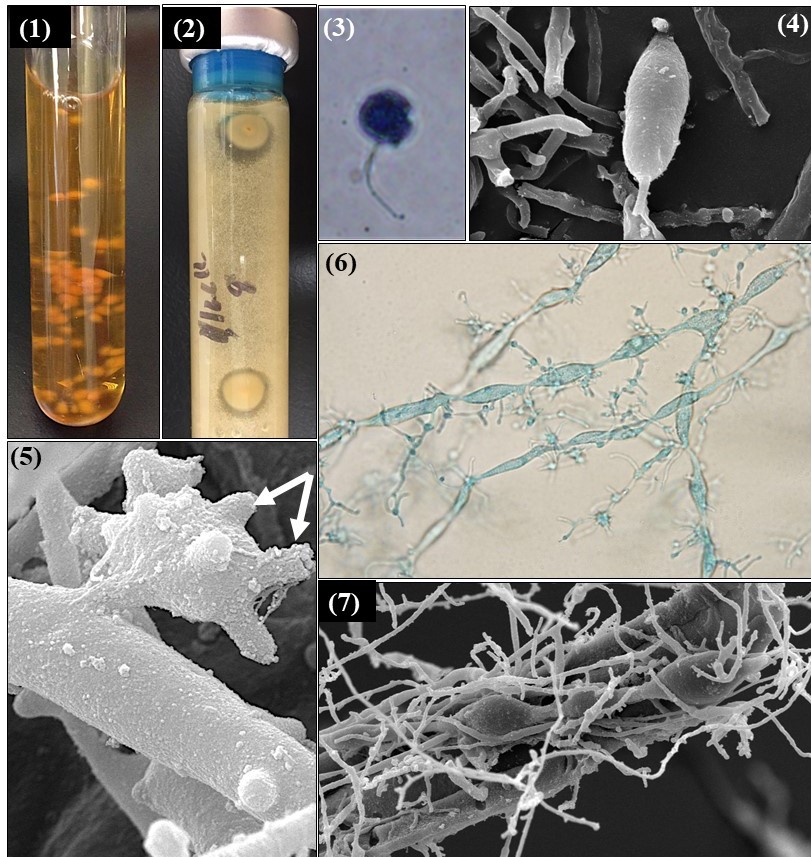Anaeromyces was the fifth genus to be discovered and the second polycentric anaerobic fungal genus to be described. This genus is similar to Orpinomyces in that it is also polycentric with a filamentous rhizomyeclium, however, it can be morphologically differentiated on the basis of zoospore flagellation and sporangial morphology. Anaeromyces produces monoflagellated zoospores in comparison to the polyflagellated zoospores of Orpinomyces. The sporangia of Anaeromyces also differs from Orpinomyces in having a pointed or acuminate apex.
The genus Anaeromyces was first described by Breton et al (1990) who reported the first species, A. mucronatus. Ironically, a few weeks later Ho et al (1990) also published a genus and species with similar morphology, calling it Ruminomyces elegans. Due to Anaeromyces being first published, this name had taxonomic priority, and Ruminomyces elegans was later renamed to A. elegans (Ho et al, 1993).
Both A. mucronatus and A. elegans are similar, but when originally published A. elegans was considered to have distinctive lobed or bead-like hyphal structures called appressoria. These structures are believed to aid the penetration of the plant cell wall. Whether this is indeed a differentiating feature between the two species has been questioned, as it is possible that appressoria were overlooked during the original description of A. mucronatus (Ho & Barr, 1995).
Currently there are four Anaeromyces species described: A. mucronatus (type species, type strain BF2), A. elegans (Ho et al., 1993), A. contortus (Hanafy et al, 2018) and A. robustus (Li et al, 2016). Phylogenetic analysis using the ITS1 as a taxonomic marker enables differentiation between the different Anaeromyces species. However, lack of sequence data for A. elegans limits any genetic evaluation of its relationship relative to the other species.

Morphology
Images are shown above of a recently isolated Anaeromyces contortus culture, strain O2.
In liquid media, Anaeromyces contortus produces thick, pearl-like growth (Image 1). In agar roll tubes it produces medium sized beige colonies (Image 2).
Anaeromyces contortus produces uniflagellated zoospores (Image 3). It has a polycentric thalli and fusiform sporangia with pointed or mucronated apex (Image 4). Similar to A. elegans, A. contortus has lobed or appressorium-like structures with multiple penetration pegs (arrows) (Image 5). The rhizomycelium has multiple constrictions at regular intervals giving it a characteristic sausage shape (Image 6). Complete entrapment of plant fiber by A. contortus hyphae is shown in Image 7.
Sequence Information
There is currently one publicly available sequenced genome for this genus, Anaeromyces robustus. For the latest update regarding publically available genomes for this genus, please see here.
For the Anaeromyces contortus strain O2 that is pictured above, the LSU sequence is available in the NCBI database (accession number MF121931).
